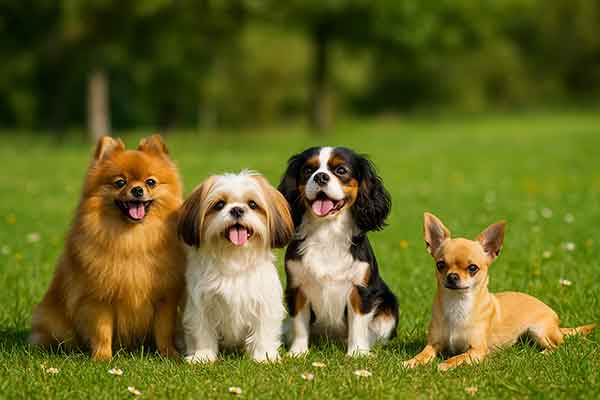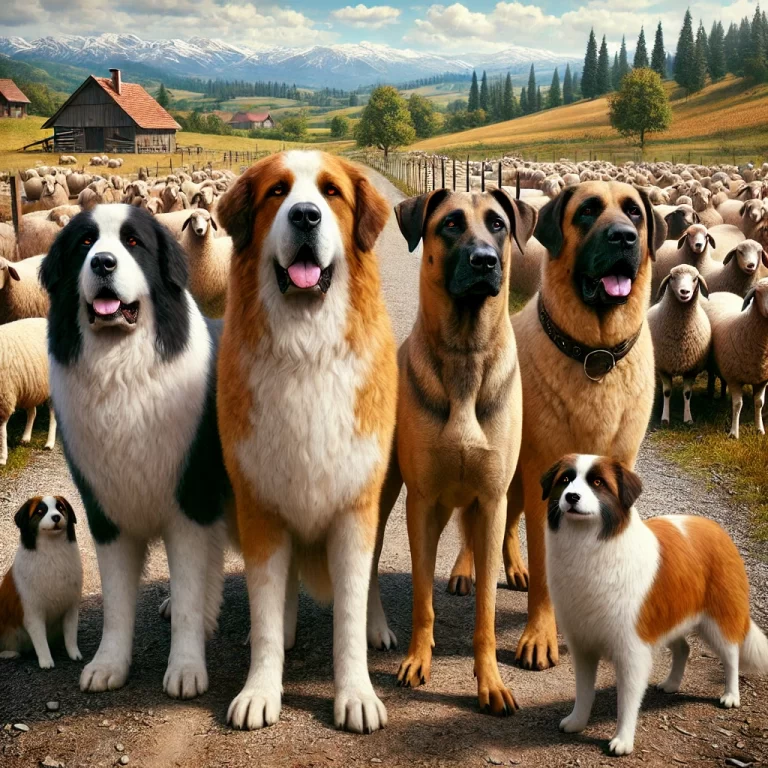What Are the Small Dog Breeds? 20 Adorable Options to Consider
If you’re looking for a canine companion that’s easy to carry, apartment-friendly, and overflowing with charm, you’re in the right place. Small dog breeds have grown in popularity for their adorable looks, manageable size, and affectionate nature. But what are the small dog breeds, and which one is right for you? In this article, we’ll explore the world of small dogs, from toy breeds to terriers, and highlight their unique qualities, needs, and personalities.
Table of Contents
- Why Choose a Small Dog Breed?
- Popular Small Dog Breeds
- Toy Dog Breeds (Under 10 Pounds)
- Small Terrier Breeds
- Hypoallergenic Small Dogs
- How to Care for Small Dog Breeds
- FAQ
- Conclusion
Why Choose a Small Dog Breed?
Small dogs are loved for more than just their size. Here’s why many families, singles, and seniors opt for a smaller companion:
- Apartment-friendly: Small dogs adapt well to urban living and smaller spaces.
- Easy to transport: Traveling is simpler with a small dog that fits in a carrier.
- Lower food costs: Less size means less food, saving you money long-term.
- Longer lifespan: Small dog breeds often live longer than their larger counterparts.
- Big personality in a tiny body: Most small dogs are bold, affectionate, and full of life.
Popular Small Dog Breeds
Let’s start with a list of some of the most popular small dog breeds in the world, many of which rank high in both cuteness and companionship:
- Chihuahua – Tiny but fierce, known for loyalty and sass.
- Pomeranian – Fluffy, social, and often referred to as a “purse dog.”
- Yorkshire Terrier (Yorkie) – Glamorous and brave, with a silky coat.
- Shih Tzu – Calm, affectionate lap dogs with a regal history.
- Maltese – Pure white coat, gentle personality, hypoallergenic.
- French Bulldog – Stocky, loving, and ideal for apartment life.
- Miniature Dachshund – Long body, short legs, and tons of character.
- Cavalier King Charles Spaniel – Sweet-natured and great with families.
- Pekingese – A royal breed, slow-paced but dignified.
- Havanese – Cuba’s national dog, charming and trainable.
Toy Dog Breeds (Under 10 Pounds)
Toy breeds are the smallest group recognized by major kennel clubs. These dogs usually weigh under 10 pounds and are prized for their cuteness and companionable nature.
- Papillon: Butterfly ears and graceful movement.
- Brussels Griffon: Human-like expressions and tons of personality.
- Japanese Chin: Quiet, elegant, and highly affectionate.
- Chinese Crested: Unique in appearance, minimal shedding.
- Russian Toy: A lesser-known breed with big energy in a tiny frame.
Toy dogs often form very strong bonds with their owners and thrive in households where they receive lots of attention.

Small Terrier Breeds
Terriers are known for being bold, energetic, and independent. Many terrier breeds come in small sizes and make great companions for active families:
- Jack Russell Terrier: Always on the go, loves to chase and dig.
- West Highland White Terrier (Westie): Smart, sturdy, and friendly.
- Cairn Terrier: Made famous by Toto from “The Wizard of Oz.”
- Norwich Terrier: Outgoing and curious, great with kids.
- Scottish Terrier: Independent, dignified, and low to the ground.
Hypoallergenic Small Dogs
Many people search for small dog breeds that don’t shed or are allergy-friendly. While no dog is 100% hypoallergenic, these breeds tend to be better for allergy sufferers:
- Bichon Frise: Curly coat traps dander; needs regular grooming.
- Maltese: Single coat that doesn’t shed much.
- Toy Poodle: Intelligent, low-shedding, and easy to train.
- Löwchen: Rare breed with minimal shedding.
- Yorkshire Terrier: Hair, not fur—so less dander spread.
How to Care for Small Dog Breeds
Small dogs may be compact, but they have specific needs to stay healthy and happy. Here are some care tips:
- Use harnesses, not collars: Small dogs have fragile necks and tracheas.
- Feed small-breed formulas: Their metabolism is fast; they need calorie-dense food.
- Watch for hypoglycemia: Especially in puppies and toy breeds.
- Protect from big-dog rough play: They can get hurt easily during roughhousing.
- Provide stimulation: Many small breeds are intelligent and need toys, puzzles, and interaction.
FAQ
What dog breeds are considered small?
Generally, breeds weighing under 25 pounds and standing under 16 inches tall at the shoulder are considered small dogs. This includes toy breeds, terriers, and companion dogs.
Are small dog breeds good for families?
Yes! Many small dog breeds like the Cavalier King Charles Spaniel, Shih Tzu, and Havanese are great with kids and adjust well to family life.
Do small dogs live longer than large dogs?
In most cases, yes. Small dog breeds often live between 12–16 years, while larger breeds may have shorter life spans of 8–12 years.
Which small dog breeds are easiest to train?
Toy Poodles, Papillons, and Havanese are known for being intelligent and eager to learn, making training easier.
Can small dogs be protective?
Absolutely. Despite their size, breeds like Chihuahuas, Yorkies, and Miniature Pinschers can be very alert and make excellent watchdogs.
Conclusion
So, what are the small dog breeds? From playful terriers to pampered lap dogs, there’s a small breed for nearly every personality and lifestyle. Whether you’re looking for a hypoallergenic companion, a city-friendly pooch, or a bold little adventurer, small dog breeds offer big love in petite packages. Understanding their traits, needs, and behaviors helps ensure a long, happy life together—no matter how tiny their paws may be.



